When you create a new recommendation strategy, you must designate it in the Recommendation Permission modal as a global strategy, which makes it accessible to all your accounts, or as a local strategy, which makes it accessible only to the current account.
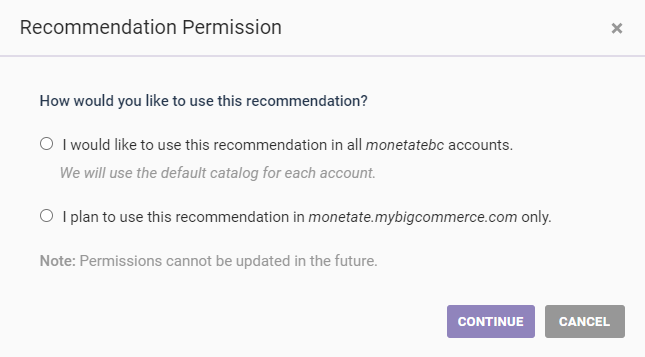
Global strategies are best when each account has an assigned default product catalog and the strategy uses algorithmic methods of generating recommendations.
Local strategies are best when the strategy draws from a product catalog that isn't the account's default catalog or uses nonalgorithmic methods of generating recommendations, such as a Recommendations dataset.
For example, you have three accounts, each corresponding to a country-specific domain name:
- Account.US — For the
yoursite.usdomain; default product catalog is US_PRODUCTS - Account.CA — For the
yoursite.cadomain; default product catalog is CA_PRODUCTS - Account.UK — For the
yoursite.ukdomain; default product catalog is UK_PRODUCTS
If you create a global recommendation strategy using the Viewed and Also Viewed recommendation algorithm, then recommendations for yoursite.us visitors come from US_PRODUCTS, from CA_PRODUCTS for yoursite.ca visitors, and from UK_PRODUCTS for yoursite.uk visitors. Each account maintains its own Viewed and Also Viewed list for its respective default product catalog.
This screenshot shows how the Product Catalog selector is fixed on ACCOUNT LEVEL DEFAULT in a global recommendation strategy, indicating the account's default product catalog is used for the strategy. Because the selector is disabled, you cannot choose a different catalog.
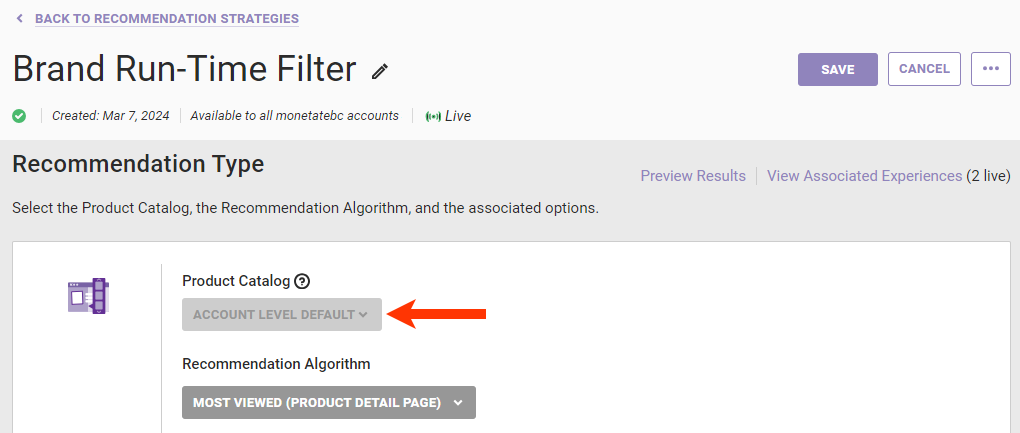
You can, however, select a different product catalog when you create a local recommendation strategy. Continuing with the previous example, you could create a local recommendation strategy for Account.US and then select a product catalog uploaded to that account for the strategy to use.
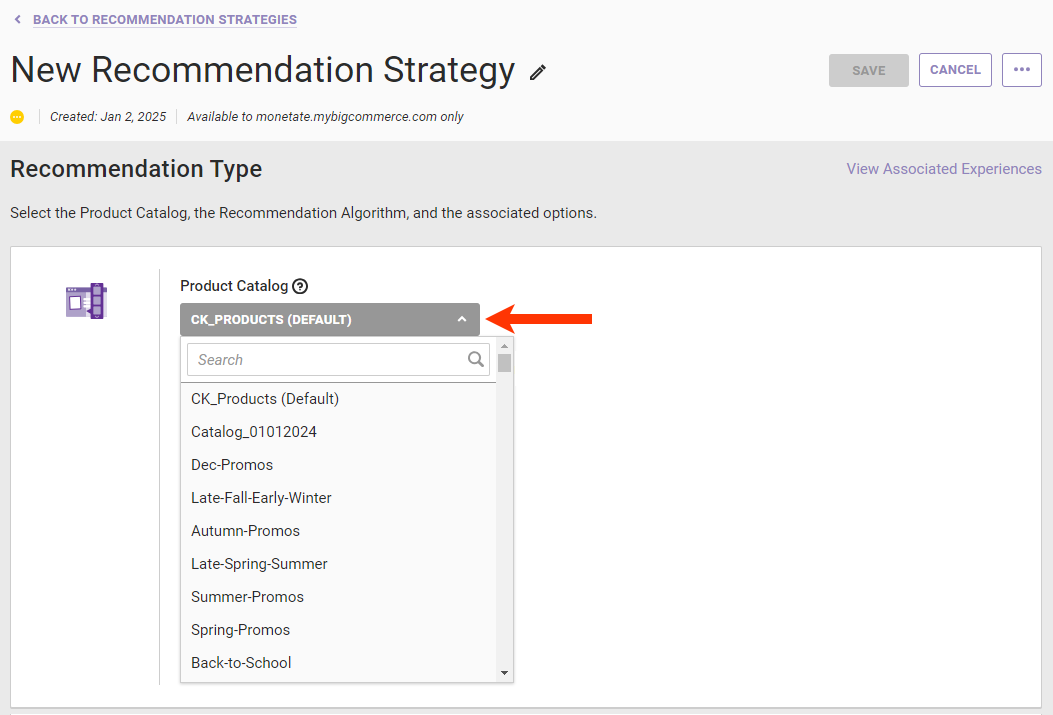
Be familiar with the contents of a product catalog you select for a local strategy so that you can better ensure the strategy, once configured, returns recommendations as you anticipate.
Duplicating Recommendations Experiences
When you duplicate an experience with a recommendations action within the same account, that account always has access to the same global and local recommendation strategies. Duplicating a recommendations experience from one account into another account, however, has certain limitations that you must understand.
If the experience you want to duplicate contains a recommendations action that uses a global recommendation strategy, then the same global strategy is available in any other account into which you're duplicating the experience. Furthermore, any updates to that strategy (for example, changing recommendation filters) affect all experiences using that strategy across accounts.
If the experience you want to duplicate contains a recommendations action that uses a local recommendation strategy and that strategy uses the account's default product catalog and doesn't use a recommendations dataset, then it's converted into a global strategy when duplicated into another account. This screenshot shows the message that appears in the user interface when you successfully duplicate a recommendations experience that uses a local recommendation strategy from one account into another.
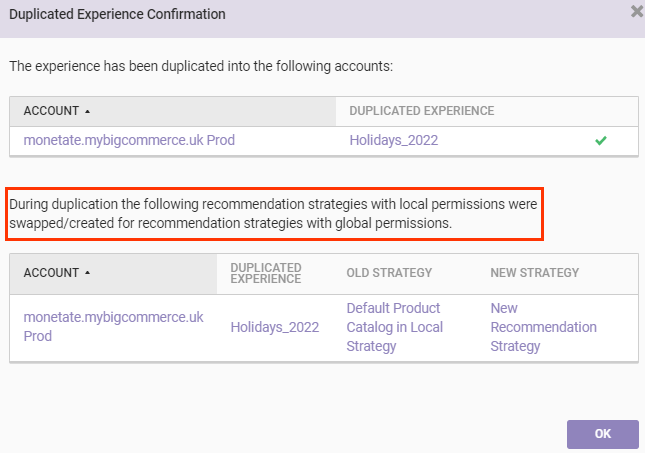
If the recommendations experience employs a local recommendation strategy that uses a product catalog that is not the default product catalog or that uses a recommendations dataset, then the strategy can't be converted into a global strategy and the experience can't be duplicated across accounts. This screenshot shows the error message that appears when you try to duplicate a recommendations experience powered by a local recommendation strategy using a recommendations dataset into another account.
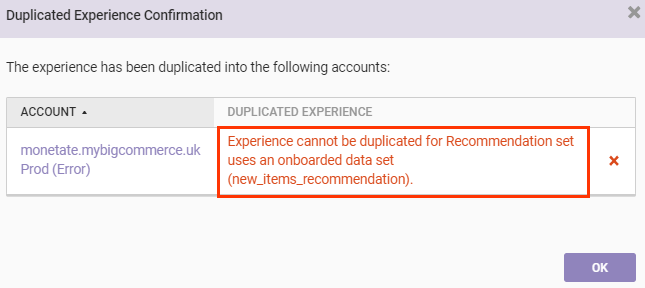
Another factor to consider when duplicating a recommendations experience is if its recommendation strategy uses market-specific data. If it does, then you can only duplicate the experience into one of the accounts that belongs to the market selected in the recommendation strategy. However, if that recommendation strategy doesn't use the native account's default product catalog, then you cannot duplicate the experience into another account that also belongs to the same market. See Create a Recommendation Strategy for Market-Level Recommendations for more information.